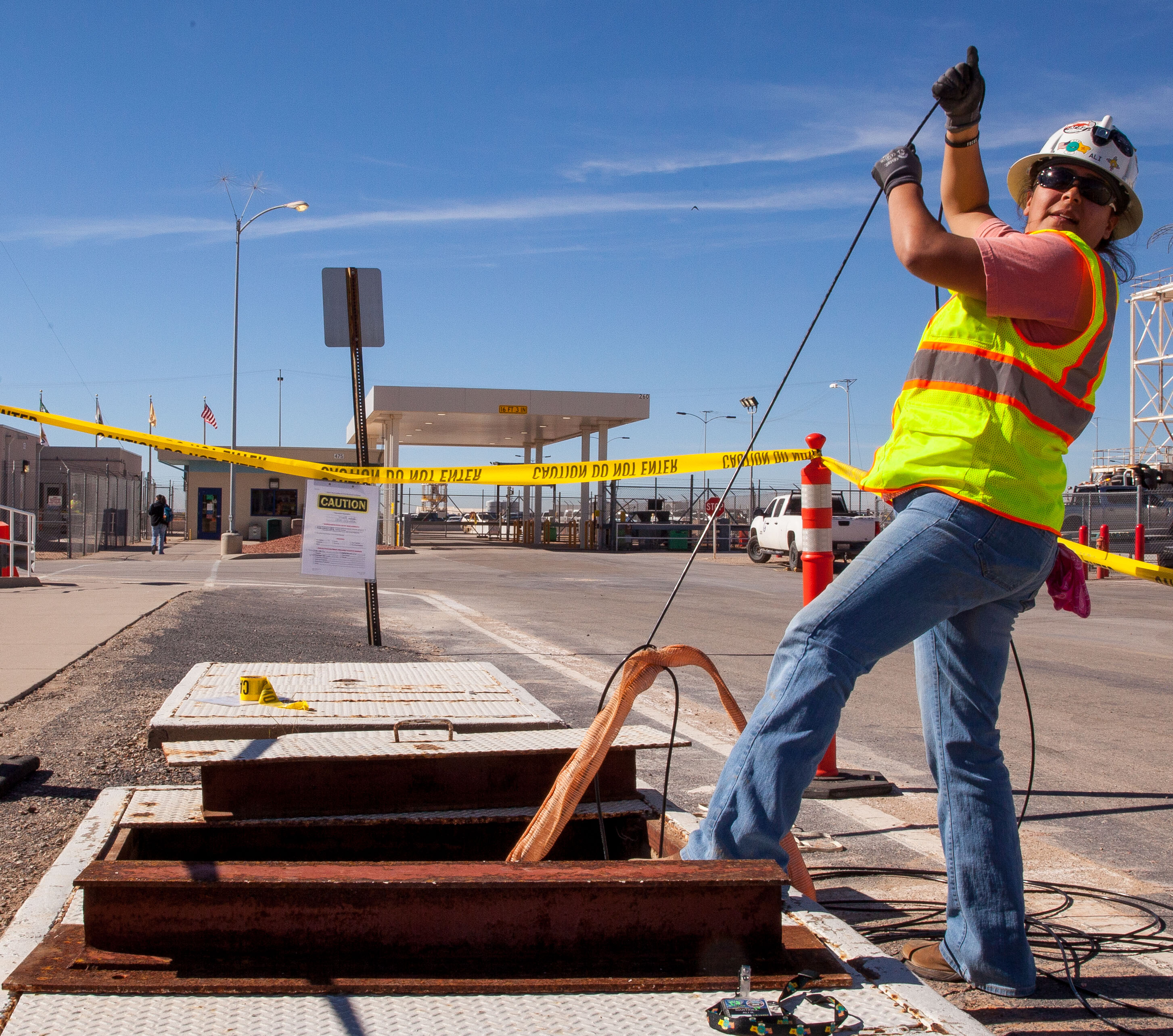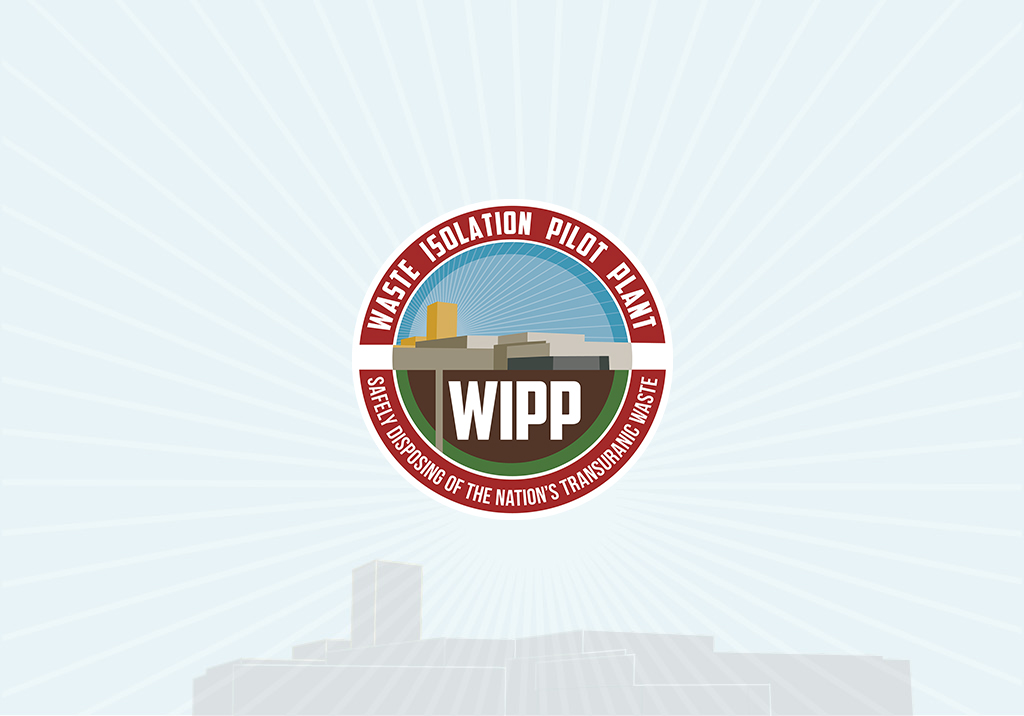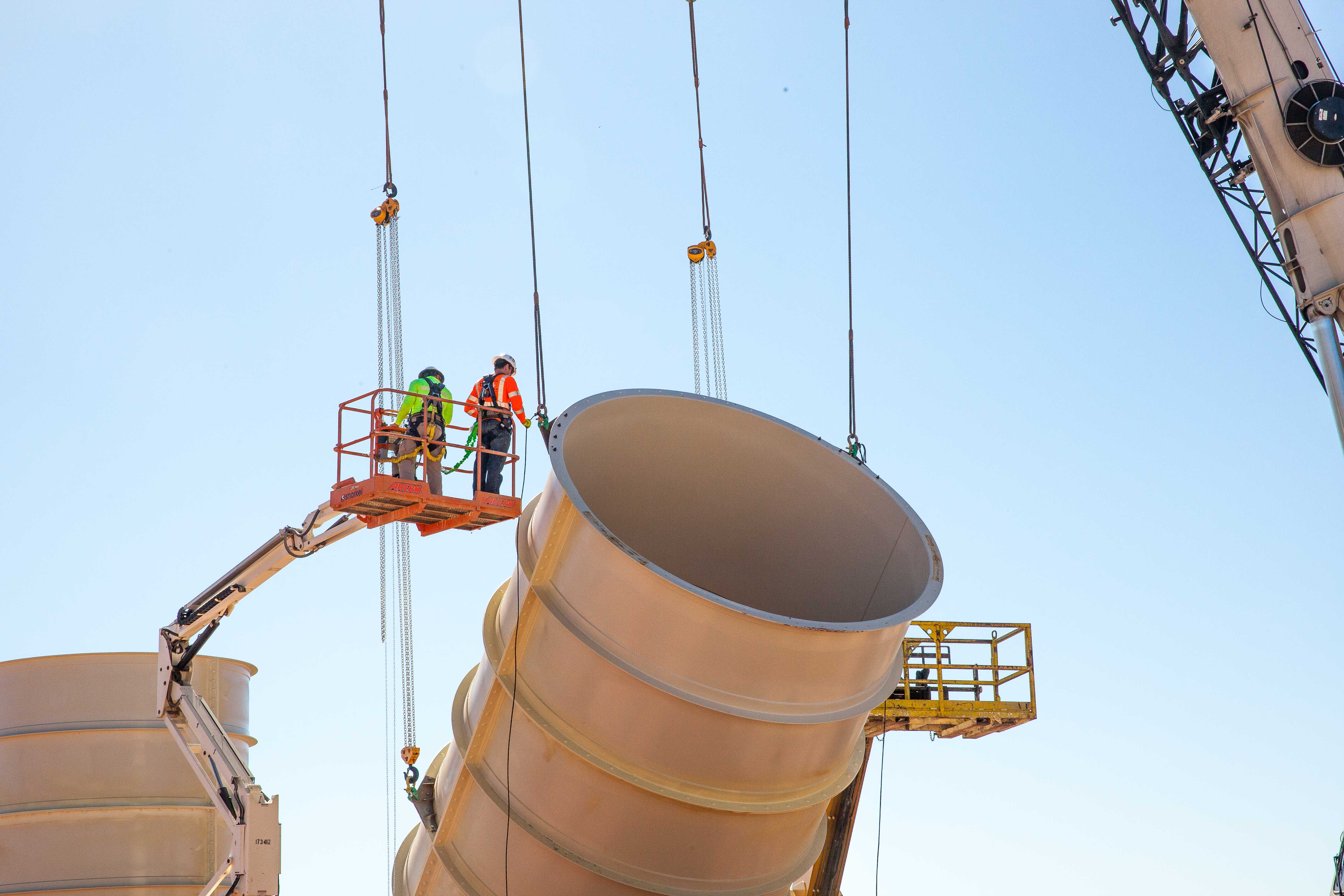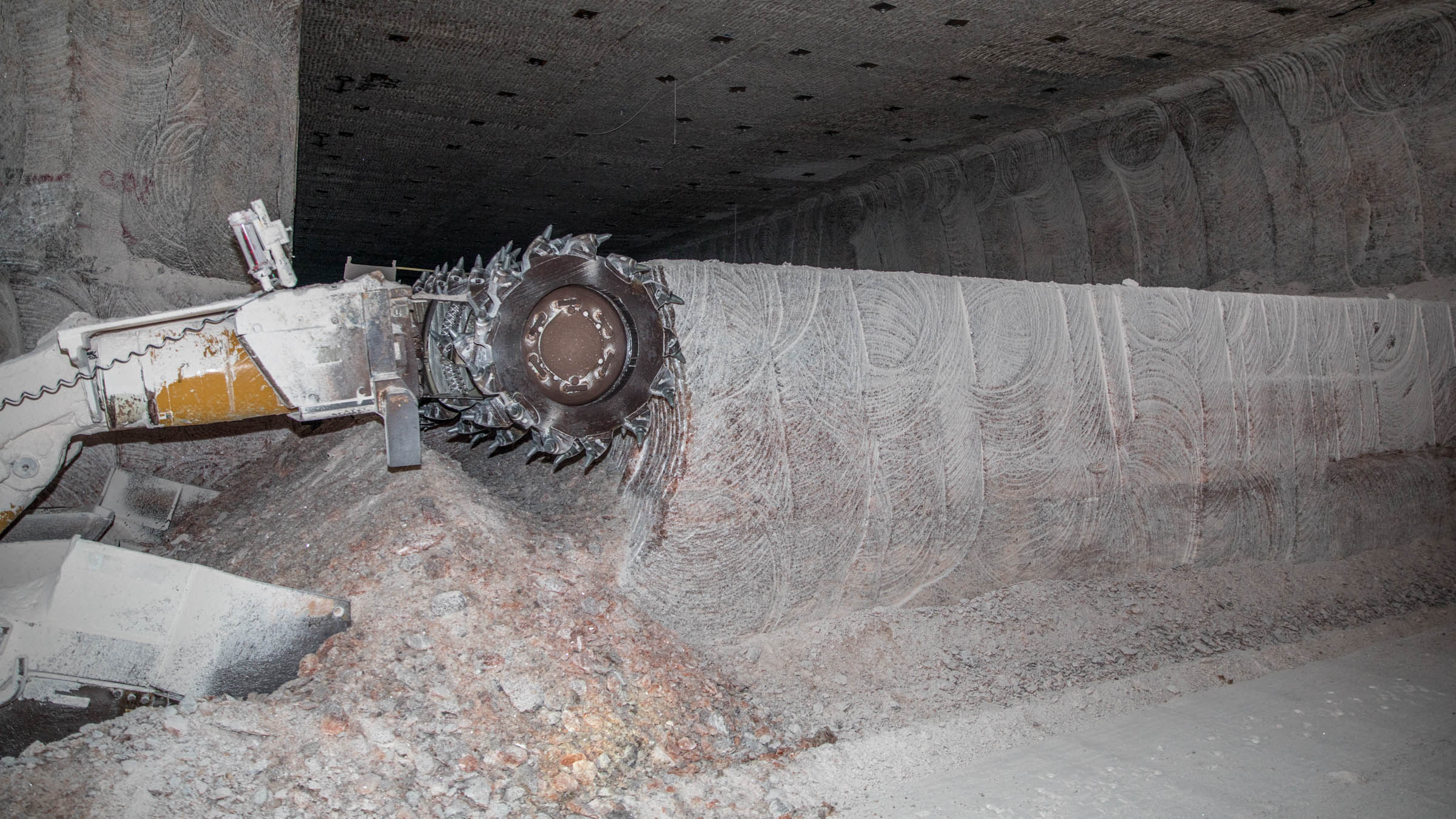
Weaving the Fiber (Optics) of WIPP
February 17, 2022
WIPP Leadership Academy Makes Leaders of Safety Culture
January 10, 2021A Year of Progress
Multiple projects at WIPP that were slowed by the pandemic spun back up to speed in 2021 and showed visible progress, led by the Safety Significant Confinement Ventilation System (SSCVS), the largest containment fan system in the DOE complex.
Work on the system’s three major facilities showed major advancements.
The foundation for the New Filter Building, where 1,000-horsepower fans will pull air through HEPA filtration, was completed three weeks early, kick-starting construction of the building’s walls.
The Salt Reduction Building went vertical with the installation of precast concrete walls and roof, a DOE/HQ Environmental Management complex-wide priority for 2021.
The utility shaft, the massive air intake for the system, has reached 124 feet of its projected 2,275-foot depth. The new shaft saw the installation of a plenum and ductwork that will force air into the underground. It will be WIPP‘s largest shaft at 26 feet in finished diameter.

RESTARTING THE LEGACY 700-C FAN
Bridging the gap between the current ventilation system and when the SSCVS is scheduled to start in 2025, WIPP prepared to restart one of its legacy fans, the 700-C.
NWP Operations Manager Gene Balsmeier contends that leadership is not about whether you were born with the charisma that makes you a leader.
The WIPP ventilation system currently pulls 170,000 cubic feet per minute (cfm) of filtered air throughout the underground. The 700-C fan will provide 240,000 cfm of unfiltered air for non-emplacement activities, such as mining and rock bolting.
When the SSCVS comes online, it will provide up to 540,000 cfm in either filtered or unfiltered modes.
More air allows more machinery to work in the underground and makes for a safer and more comfortable working condition.
PREPARING FOR FUTURE EMPLACEMENT
As Panel 7 nears capacity, mining crews excavated the last of more than 120,000 tons of salt to create Panel 8. After outfitting with power, communications and air monitors, Panel 8 will be prepared to accept waste starting in 2022. It is anticipated that Panel 7 will be filled in April 2022.
Mining at WIPP is timed so that a disposal panel is only ready when it is needed. This is because the natural movement of salt causes mined openings to close at a rate of two to four inches yearly, eventually permanently encapsulating the waste.
WIPP also began mining westward in 2021, a DOE/HQ Environmental Management complex-wide priority for 2021. The move west will mark a change for WIPP’s footprint, which has been primarily north/south. Westward drifts were green lighted with New Mexico Environment Department approval of a new utility shaft and connecting drifts.

OVERHAULING AGING INFRASTRUCTURE
WIPP’s aging infrastructure is getting a massive overhaul.
- A new fire protection system is close to completion, including new 200,000-gallon water tanks, a pump house, and mains.
- Updated electrical substations above and below ground will replace aging equipment.
- New equipment will provide compressed air for underground airlocks.
- A new Central Monitoring Room and fiber-optic network allows for close monitoring of all WIPP operations.
- The site’s upgraded lighting protection system safeguards critical infrastructure, such as the hoists and water supply.
OUTAGE COMPLETES 97 PROJECTS
WIPP personnel prioritize maintenance in the form of daily through yearly preventive maintenance checks, and once a year, the most complex projects receive attention over an extended period of time. A two-month maintenance outage in 2021 proved productive, as crews completed 97 projects.
The largest effort included removing tracks at the waste station 2,150 feet underground. This included digging out six feet of rock and re-leveling the area with gravel and salt. The tracks serve a dual purpose of moving waste and materials when they reach the WIPP underground.
A double bulkhead that supplies airflow to the station was also replaced, including new ventilation fans.
